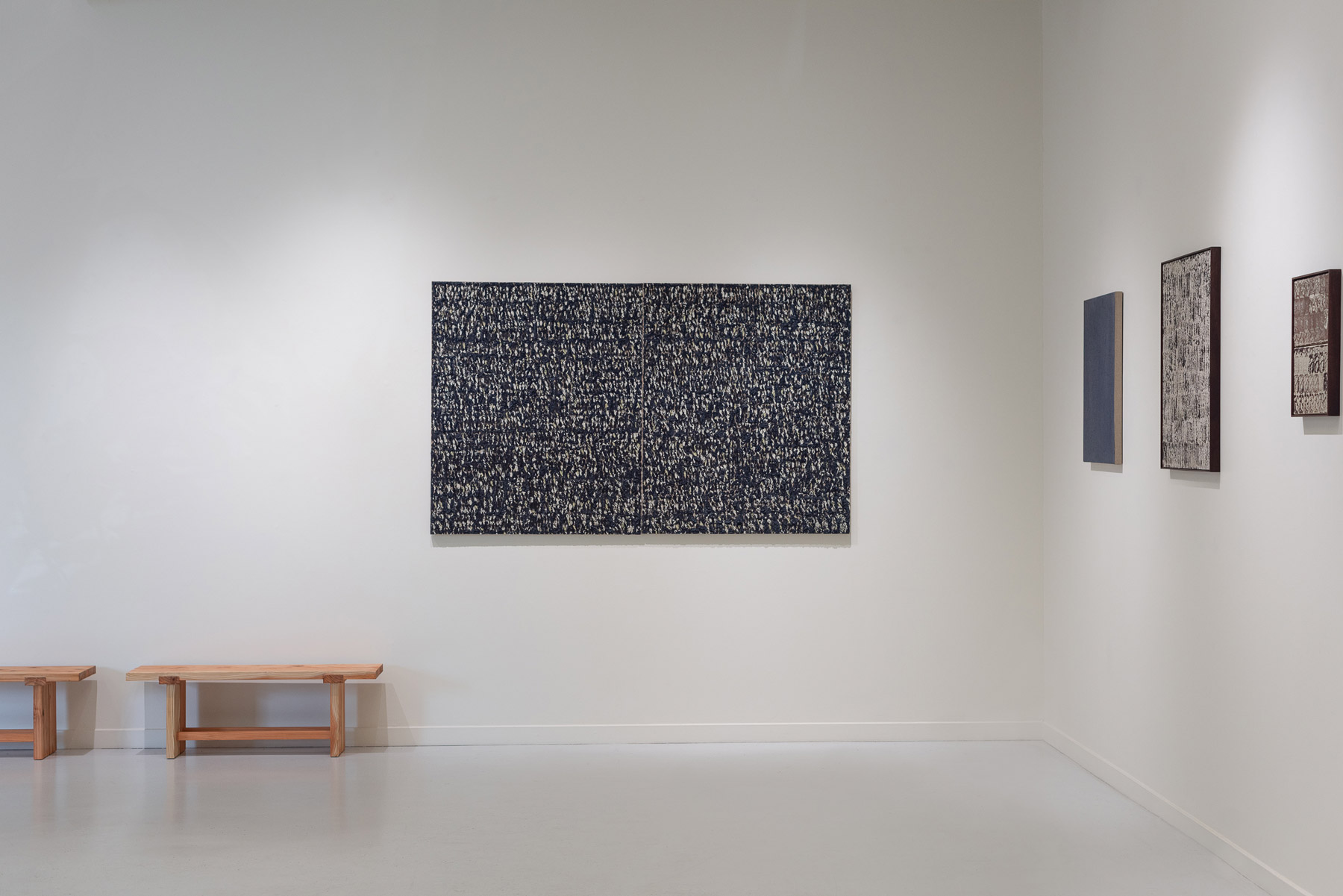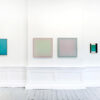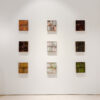Two Kinds of Vision, takes its name from a chapter in Lee Ufan’s seminal text, The Art of Relatum. Grounded in the phenomenology of Maurice Merleau-Ponty, Lee’s ideas probe the complex layers of perception and experience, inviting us to consider how we engage with and interpret the world through different lenses.
For Cindy Leong, abstract painting is a meditative practice, a vehicle through which to explore themes of impermanence, presence, and interconnectedness central to Eastern philosophies. Rooted in Buddhist and Taoist concepts, her works evoke a state of quiet introspection, where the act of looking becomes a form of deep listening. Through repetitive mark-making, Leong’s canvases invite viewers into a reflective space, encouraging a perceptual shift from external form to internal resonance.

KIN Studio’s work as a woodworker embodies the philosophy of wabi-sabi, embracing the beauty of imperfection and the quiet dignity of natural materials. Guided by the Japanese aesthetic that values irregularity, weathering, and the marks of time, KIN Studio’s pieces highlight the tactile qualities of wood—its grain, texture, and natural imperfections. By working with rather than against the inherent characteristics of his materials, he allows the viewer to see beauty in its natural form. KIN Studio’s objects do not demand attention but rather invite a subtle, contemplative appreciation.
In an age dominated by immediacy and distraction, Two Kinds of Vision reminds us of the richness in the act of sustained, attentive looking. This exhibition invites viewers to experience a world that is simultaneously seen and felt—a world that unfolds only to those willing to linger.
The text was provided by the gallery.



